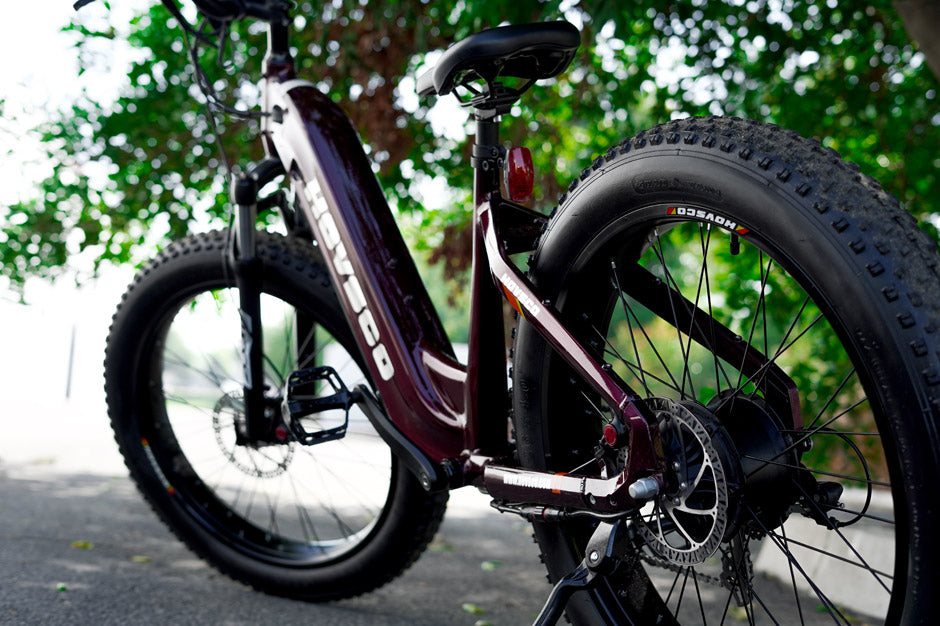
Torque vs. Cadence Sensors on Pedal Assist E-Bike
The pedal assist system is an essential feature for every e-bike in 2023. Not only does it make you effortless. But, it will also help you to extract the best power and range out of your e-bike.
If you go into the market for an e-bike with a pedal assist system, you will find many of them mentioned as cadence pas or torque-based PAS.
In this article, we are going to mention the difference between Torque and cadence sensors & which one you should choose for yourself!

What is a Cadence sensor PAS?
The cadence sensor PAS is an ideal daily-use system that will help you to keep going at different pedal assist levels. The system engages as soon as you start to pedal, and then you can select among many PAS levels.
In a cadence sensor PAS, the manufacturer limits the amount of effort that you need to put in to gain a certain speed. For example, if you select the PAS level 1 that comes with a max speed of 8 mph, then initially the motor will put in a lot of effort, and once you reach the speed, the motor will gradually decrease its output.
Cadence Sensor PAS benefits:
- Easy to use: The cadence-based PAS system is easy to use. It engages automatically and you can select from different modes for your riding requirements.
- Churns out good power: The riders can get the power based on their requirements. The modes activate after you start pedalling and the power delivery stops if you stop pedalling. The power is delivered in a linear manner making your rides effortless. Whether you are riding in the mountains or riding in the plains you always have sufficient power for yourself.
- Easy to cruise & ride: the cadence-based pedal assist system allows you to cruise and ride through long distances. This is also helpful for you to maintain consistent speeds and stay under the speed limit. Also, there are different modes to choose from, you can select the one that matches your requirements.
Disadvantages:
- Jerky at times: the cadence sensors can make you feel jerky. In simple words, we can say that you will feel the engagement of the motor while riding and this might lead to jerks while riding your e-bike, especially when your pedal inputs are not consistent.
- Less range:the pedal assist system can decrease your range in excessive use. Especially, if you are using the cadence sensor at a higher level, then your battery will drain out faster.
Torque Sensor PAS
The torque-based sensor PAS is advanced compared to the cadence-based PAS. The cadence sensor checks if the rider is pedalling, whereas the torque sensors have a precise strain gauge to check the intensity of pedalling.
The torque sensors check how much effort you are putting in while pedalling and they provide adequate power from the motor.
It will make all the changes in power delivery in real-time based on how hard the rider pedalling. The harder you try to pedal, the more power will be delivered by the motor to match up to the level.
Advantages of Torque Sensor PAS :
- More intuitive and natural: the torque sensors measure the efforts that you are putting on the pedals, and you receive adequate power from the motor. This makes the experience of riding an e-bike natural and intuitive for you.
- Best range from the motor: torque sensor PAS sensors will help you to get the best range out of your e-bike. As these systems. Most of these PAS systems are calibrated well with the battery & motor. As the power is supplied in real-time, as a result, you will get the maximum range from your battery
Disadvantages of Torque sensor pas :
- Takes a lot of time to reach high speeds: the torque-based system takes a lot of time to reach the top speed as the power is supplied as per the pedalling effort, you will have to pedal faster to reach higher speeds.
Summing up: Cadence Sensor PAS vs Torque Sensor PAS
Choosing the best one depends on you. The cadence sensor pas is industry standard, these are easy to use, and provide the freedom to choose your power & ride effortlessly. Whereas the torque-based PAS provides the output based on the pedalling effort that you provide.
The cadence sensor Pas would be ideal for everyone looking for a commuter e-bike. Whereas the torque sensor PAS is ideal for people who want a natural riding experience with long range.
Again, you can choose the one that matches your requirements. Think through!
































Leave a comment